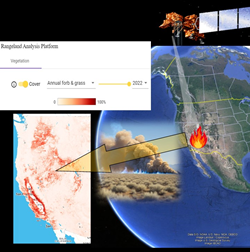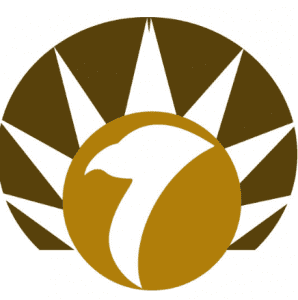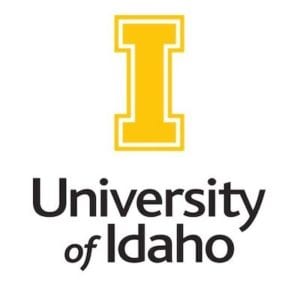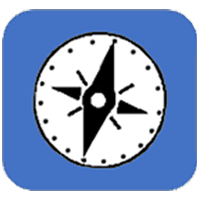Sagebrush
Webinar recording.
The sagebrush biome is one of the largest habitat types in North America, spanning 175 million acres and home to sage grouse and 350 other species. USDA’s Natural Resources Conservation Service (NRCS) launched the Sage Grouse Initiative in 2010 to deliver win-win voluntary conservation solutions that support ranchers and other landowners in improving the productivity of their working lands while benefiting sage grouse. The Initiative has successfully addressed key threats impacting sage grouse by focusing on population core areas. Science has helped strategically guide, refine, and inform these voluntary, private lands conservation efforts across 11 western states.
Webinar recording.
Cara Applestein, Samuel “Jake” Price, and Matt Germino, USGS, present their latest work on accuracy assessments of the newest mapped products for burned areas. They will give guidelines for reliable application, including stating what is “unsafe” application, what the scientific basis for the guidelines are, and examples of how they use the data. They will address RAP, RCMAP, and LandCart.
Summit webpage.
The summit will be in Lakeview, OR on Sept. 26-27, 2023. There will be in-person and virtual options.
Forum webpage.
This year’s forum will be held in Boise, ID with a symposium on October 5 and a field tour on October 6.
Meeting webpage.
Brad Schultz and colleagues will guide us on a tour to several locations where they have located and re-taken photos that were originally taken decades earlier. Topics for discussion will include, but not be limited to, aspen dynamics (is it disappearing or expanding?), expansion/increase of mountain browse species, and responses of higher elevation/higher ppt. sagebrush plant communities to fire! Please bring your own lunch and be prepared to eat on the go (in vehicles). Also be sure to bring plenty of water, snacks, sunscreen, bug stuff, and whatever else you need to spend the day out on rangelands. We will plan to make two outhouse stops at a campground during the tour.
View report.
We found that there were large proportions of non-significant responses among all categories combined, with roughly half or more of all responses non-significant (48 percent for wildlife, 60 percent for vegetation-environmental), comparable to other recent systematic reviews of pinyon-juniper treatment effects. However, we also found that when there were significant responses, some important trends potentially emerged. Important undesirable outcomes included far more positive than negative responses of exotic grass and forb abundance among nearly all treatment types. Cutting treatments were also more likely to decrease biocrust cover and microbial activity. Potentially beneficial outcomes included mostly positive responses among sagebrush obligate species, including more positive than negative responses for mule deer and sage-grouse. Some treatment types (for example, mastication) also resulted in more positive than negative responses for native grasses and forbs (although, non-significant responses were the majority). We also highlighted many limitations of this review, including how responses often come from few studies, and how some response-treatment category combinations lack adequate response data. Moreover, the existing research is often insufficient to address many key questions about treatment effects, largely owing to short time-scales and limited spatial extents of observations, which do not match the size of treatments being implemented by land managers, nor capture long-term, post-treatment ecological dynamics. We also identify a lack of research that addresses key interactions that could undermine restoration objectives, including potential effects of climate change and grazing on post-treatment environments. Thus, we emphasize the importance of integrating these factors into future pinyon-juniper treatment research, and we stress the need for use of monitoring programs and research studies that partake in data collection and analysis over long durations and broad spatial scales.
View article.
More frequent, larger, and severe wildfires necessitate greater resources for fire-prevention, fire-suppression, and postfire restoration activities, while decreasing critical ecosystem services, economic and recreational opportunities, and cultural traditions. Increased flexibility and better prioritization of management activities based on ecological needs, including commitment to long-term prefire and postfire management, are needed to achieve notable reductions in uncharacteristic wildfire activity and associated negative impacts. Collaboration and partnerships across jurisdictional boundaries, agencies, and disciplines can improve consistency in sagebrush-management approaches and thereby contribute to this effort. Here, we provide a synthesis on sagebrush wildfire trends and the impacts of uncharacteristic fire regimes on sagebrush plant communities, dependent wildlife species, fire-suppression costs, and ecosystem services. We also provide an overview of wildland fire coordination efforts among federal, state, and tribal entities.
View article.
Fuel breaks were least successful in areas classified as having low resilience to disturbance and low resistance to invasion, in areas composed of primarily woody fuels, and when operating in high temperature and low precipitation conditions. Fuel breaks were most effective in areas where fine fuels dominated and in areas that were readily accessible. Maintenance history and fuel break type also contributed to the probability of containment. Overall results indicate a complex and sometimes paradoxical relationship between landscape characteristics that promote wildfire spread and those that impact fuel break effectiveness. Finally, we developed predictive maps of fuel break effectiveness by fuel break type to further elucidate these complex relationships and to inform urgently needed fuel break placement and maintenance priorities across the sagebrush biome.
View article.
By comparing connectivity patterns over time, we found that most of the biome experienced moderate change; the amount and type of change varied spatially, indicating that areas differ in the trend direction and magnitude of change. Two different types of designated areas of conservation and management interest had relatively high proportions of stable, high-connectivity patterns over time and stable connectivity trends on average. These results provide ecological information on sagebrush connectivity persistence across spatial and temporal scales that can support targeted actions to address changing structural connectivity and to maintain functioning, connected ecosystems.
View article.
Twelve in-depth interviews were conducted, and responses were analyzed using a qualitative method, causal layered analysis, not previously applied in a land management context. In the most superficial (litany) layer, cost and scale were prominent. The next (systemic) layer was framed by policy and bureaucracy limitations as well as technical barriers to implementation. In the third (worldview) layer, lack of a proactive management tradition within agencies represented a principal barrier. In the deepest (myth/metaphor) layer, the central belief is that human intervention should be used to protect ecosystem services only after they are disrupted due to human activity. Based on the different obstacles found at each level, we suggest ways to overcome the barriers detected.








